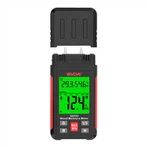Differences between infrared thermometers and optical pyrometers
Firstly, the measurement range. The optical pyrometer measures high temperatures of 700 ° C to 3200 ° C, while the infrared thermometer has a wider temperature measurement range, ranging from temperatures as low as minus tens of degrees Celsius to temperatures as high as 3000 degrees Celsius, making it more versatile.
They also have significant differences in readings, with optical pyrometers reading based on the pointer on the dial and LED display, while infrared thermometers reading through LED display, automatic storage by the thermometer, or through computer software.
Different aiming methods. Optical pyrometer is aimed through eyepiece observation, while infrared thermometer can use laser target light and video module in addition to visual viewfinder. In the measurement band for children, the optical pyrometer is around 0.66um, while the infrared thermometer is between 0.7-14um.
The measurement accuracy of optical pyrometers is ± 1%, laboratory pyrometers can reach ± 0.05%, and infrared thermometers can reach up to 0.1%.
On the working mode, after the mechanical installation is completed, it will automatically measure and read (online) or hold the thermometer at the target and press the button to read.
An optical pyrometer changes the height of the filament by observing and adjusting the current flowing through it with the human eye until it matches the brightness of the background light, resulting in significant reading errors.
Optical pyrometer
Optical pyrometer belongs to non-contact temperature instruments.
When the measured temperature is higher than the range that thermocouples can be used, and in places where thermocouples cannot be installed or are not suitable for installation, optical pyrometers can generally meet this requirement.
It is widely used to measure temperatures in metallurgy, casting, steel rolling, glass melting, forging, heat treatment, and other industrial production processes. It is one of the indispensable temperature measuring instruments in metallurgy, chemical engineering, and machinery.






